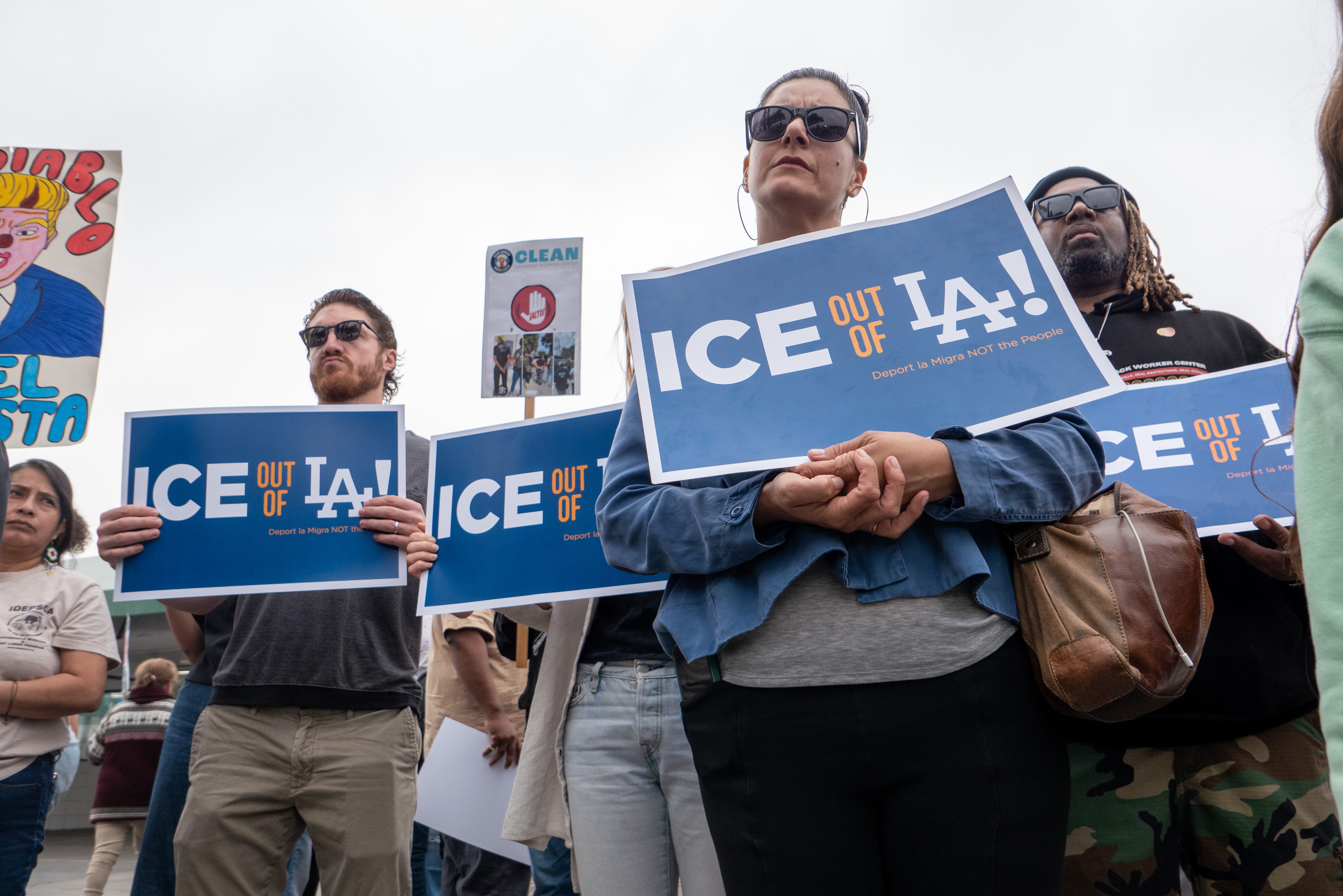Throughout his campaign, Donald Trump promised “the largest deportation program in American history.” He depicted a country where immigrants are emptied out of the world’s most notorious jails and mental institutions to “poison the blood” of America with violent crime rampages. His vision commanded the swift removal of millions of undocumented Americans.
But four months after entering office, the president’s history-making deportation plan isn’t anywhere close to those figures, and the targets are largely anything but the faces of horrific crime that he sold to voters.
Instead, Trump’s administration has revoked humanitarian protections for roughly 1 million people who were living and working in the country legally and now are vulnerable for their immediate deportation. He also deployed federal agents to stand outside courtroom doors to arrest people moments after their cases were dismissed in immigration courts.
The number of removals under Trump so far dwarfs those under former president Barack Obama, labeled among many immigrant communities the “deporter-in-chief” for his record-setting removals. His administration deported more than 438,000 people in 2013 alone, a single-year record for this century that even outpaces removals during Trump’s first term.
If Trump wanted to reach those same numbers, the president would need to more than double the current pace of removals. A frustrated Stephen Miller recently directed immigration officials to make at least 3,000 arrests a day, including sending agents to Home Depot and 7-11 stores to round up day laborers.
Deportations under Trump increased to 17,200 in April, surpassing removals from the same period last year under then-President Joe Biden. But Trump may be struggling to hit deportation targets with fewer people crossing the U.S.-Mexico border.
The president effectively shut down the asylum process and ended other legal pathways to entry along the southern border. Within the third month of his administration, apprehensions at the southern border plummeted to roughly 7,000 — marking a 95 percent decrease compared to March 2024.
Immigration enforcement under Obama zeroed in on unauthorized border crossings and cooperation with local law enforcement, while Trump is indiscriminately targeting communities with costly high-profile raids.
Prior to the Obama administration, people who were caught crossing the southern border without permission typically were allowed to return to Mexico without a formal law enforcement response, which critics say opened the door for people to try to cross again without facing any legal consequences.
Under Obama, with bigger budgets for immigration enforcement in the years after the Department of Homeland Security’s creation during the War on Terror, formal removal proceedings became more common, as did criminal charges for illegal entry or re-entry, according to the Migration Policy Institute.
Those changes reduced the number of deportations overall, but recidivism along the border fell from 29 percent in 2007 to 14 percent by 2014, the group found.
Obama later prioritized removals of people considered national security or public safety threats, and issued an executive order in 2014 characterizing criminal gang members, terrorists and people with felony convictions as the highest priority for removals.
The number of deportations fell to about 414,000 that year, marking fewer deportations than his recent predecessors overall — to the tune of more than 3 million, compared to George W. Bush’s 2 million.
Obama also relied on mechanisms to coordinate federal and local law enforcement on immigration enforcement, effectively deputizing state and local cops to enforce immigration laws. He arranged 70 of those so-called 287(g) agreements in 2009.
Trump is seeking an expansion of those agreements. But, unlike Obama, Trump is running into significant and volatile political opposition as he explicitly targets cities with majority Democratic control, where officials are resisting the administration’s sweeping, militarized response to immigration enforcement.
The president’s border czar Tom Homan has even suggested that Democratic leadership, including the governor of California and mayor of Chicago, could be arrested if he finds they have violated Trump’s commands or shielded immigrants from removal.

Trump has resorted to other tactics — including commanding all federal law enforcement agencies to prioritize immigration arrests and rescinding policy that prevents raids in places like workplaces, courthouses, schools, hospitals and other “sensitive” areas.
He also is using federal resources including the IRS to identify undocumented people, targeting international students for removal, rescinding temporary legal status for roughly 1 million people legally in the country after feeling violence, disasters and political turmoil in Cuba, Haiti, Nicaragua, and Venezuela.
On Sunday night, following a weekend of nationwide protests against his immigration agenda, Trump issued an “order” on Truth Social commanding his entire administration to get behind his push for ICE “to do all in their power to achieve the very important goal of delivering the single largest Mass Deportation Program in History.”
That includes deploying agents to several major Democratic-run U.S. cities, home to millions of people and thousands of undocumented immigrants.
The president also suggested he was backing away from workplace raids in farms, meat processing and dairy plants and hotels — multi-billion industries that backed his campaign while employing thousands of undocumented laborers — but he appeared to reverse course just days later.
Trump also is running up against budget constraints as he demands more funding for ICE and more capacity to detain tens of thousands of immigrants in an already-cramped detention system.
While Trump and Republicans in Congress push for bigger budgets DHS, ICE is already estimated to be $1 billion over budget with a few months left this fiscal year.







